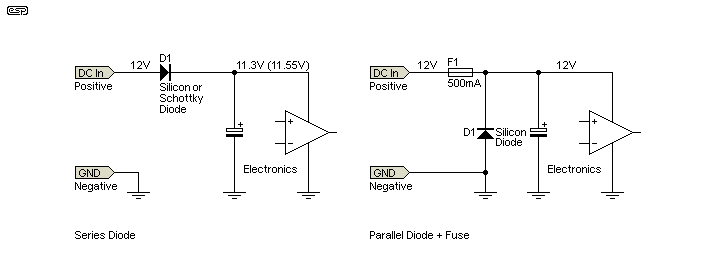Reverse Protection for Wearable Tech – SmartXProKits

🔌 The Problem: Accidental Reverse Polarity in Wearables
In wearable tech like fitness trackers and smart bands, space is tight and power is precious. A simple mistake—like connecting the battery terminals in reverse—can instantly damage the microcontroller or charging circuit. This is a common issue for hobbyists and prototypers working on compact designs.
✅ The Solution: Use a Reverse Polarity Protection Circuit
To prevent this, include a reverse protection circuit right after the power input. A basic fix is a diode in series, but for low-voltage wearables, the voltage drop (~0.7V) can be unacceptable. A smarter approach is using a P-channel MOSFET placed “upside down” to allow normal operation and block reverse connections without significant voltage loss.
💡 Practical Example :
Let’s say you’re building a 3.3V wearable step counter powered by a Li-ion cell. You add a P-channel MOSFET (like IRF9540) between the battery and the circuit. If the battery is connected correctly, the MOSFET conducts. If reversed, the body diode blocks the flow—saving your circuit.
📏 Sample Calculation :
If your device draws 200 mA and you used a Schottky diode with 0.4V drop:
Power loss = V × I = 0.4V × 0.2A = 80 mW—wasteful for battery devices!
With a MOSFET (R<sub>DS(on)</sub> = 0.05Ω):
P = I² × R = 0.2² × 0.05 = 2 mW—much more efficient!
🛒 Product Suggestion :
Try “P-channel MOSFET” or “SMD MOSFET” for compact builds:
👉 Shop now at SmartXProKits.in
🇮🇳 Support our work and India’s innovation—buy from our Make in India site!




















